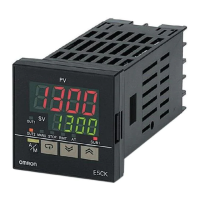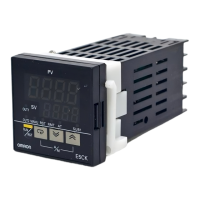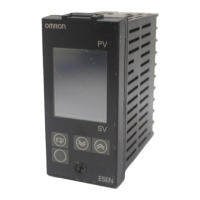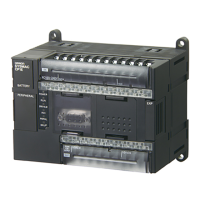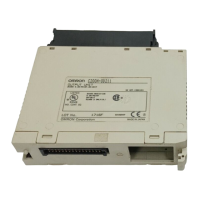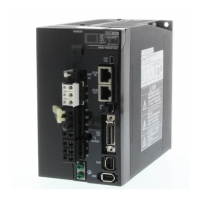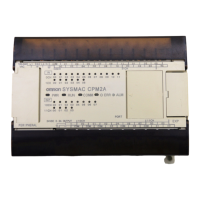BASIC commands
PROGRAMMING MANUAL 58
Revision 1.0
3.2.48 CAN_CORT
/i
Type System command
Syntax CAN_CORT(unit,4,0)
Retrieves the unit status. See the table in section 4.6.2.
CAN_CORT(unit,5,bit_rate)
Initialises the TJ1-CORT with the desired bit rate.
CAN_CORT(unit,6,node_ID,mandatory_flag)
Add a slave node to the TJ1-CORT and indicate whether it is permanently
available on the network.
CAN_CORT(unit,7,PDO_number,area_type,start_address,COB_ID,
obj_type, obj_type,…)
Configure an RPDO.
CAN_CORT(unit,8,PDO_number,area_type,start_address,COB_ID,
inhibit_time,event_timer,obj_type, obj_type,…)
Configure a TPDO.
CAN_CORT(unit,9,node_ID,index,subindex,byte1,byte2,…)
Make the TJ1-CORT configure an object in a slave during the CANopen net-
work initialization.
CAN_CORT(unit,10)
Start the CANopen network and map the Trajexia memory to RPDOs and
TPDOs.
CAN_CORT(unit,11,mode)
Set the CANopen network to pre-operational or operational state.
CAN_CORT(unit,12,node_ID,index,subindex,VR_address)
Reads the value of a CANopen node object using an SDO (Service Data
Object) command into the VR array. Each byte of the returned value occupies
one VR address.
CAN_CORT(unit,13,node_ID,index,subindex,VR_address,data_len)
Write a value of a CANopen node object using an SDO command using the
VR array as source. Each VR address is interpreted as one byte of the value
that is written.
CAN_CORT(unit,14,node_ID,VR_address)
Reads the EMCY (emergency) message from a node into the VR array. Each
byte of the eight bytes occupies one VR address.
Description The CAN_CORT commands where the second argument is 4 through 10 are
normally used in a BASIC program that is run at startup. The sequence of the
CAN_CORT commands that configure a CANopen network is important.
Arguments • unit
The sequence number of the unit.
• bit_rate
The bit rate on the CAN bus. Valid values are 2 (500 Kbps), 3 (250
Kbps), 4 (125 Kbps), 5 (50 Kbps) and 6 (20 Kbps).
• node_ID
The CANopen node on the CAN bus.
• mandatory_flag
The mandatory flag of the node.
- 0 = optional, no error occurs when the node is not in the network.
- 1= mandatory, an error occurs when the node is not in the network.
• PDO_number
Identification of an individual PDO. PDO_number can range from 0 to 7.
• area_type
The memory area in Trajexia: 1 = VR, 2 = TABLE, 3 = Digital I/O, 4 =
Analog I/O.
• start_address
The array index in the VR, TABLE, IN, OP, AIN or AOUT array.
• COB_ID
The COB (Controller Object Identification) ID used to identify a PDO in a
CANopen network.
• obj_type
The CANopen object type. Valid values are: 2 = INT8, 3 = INT16, 4 =
INT32, 5 = UINT8, 6 = UINT16, 7 = UINT32.
• inhibit_time
The minimum time in 0.1 ms units between two consecutive transmis-
sions of a TPDO.
• event_timer
The maximum time in ms units that is observed between two consecu-
tive transmissions of a TPDO. If this value is 0, the time is unlimited. The
TPDO is sent only when the contents changes.
• index
The index of the addressed CANopen object.
• subindex
The subindex within the addressed CANopen object.
